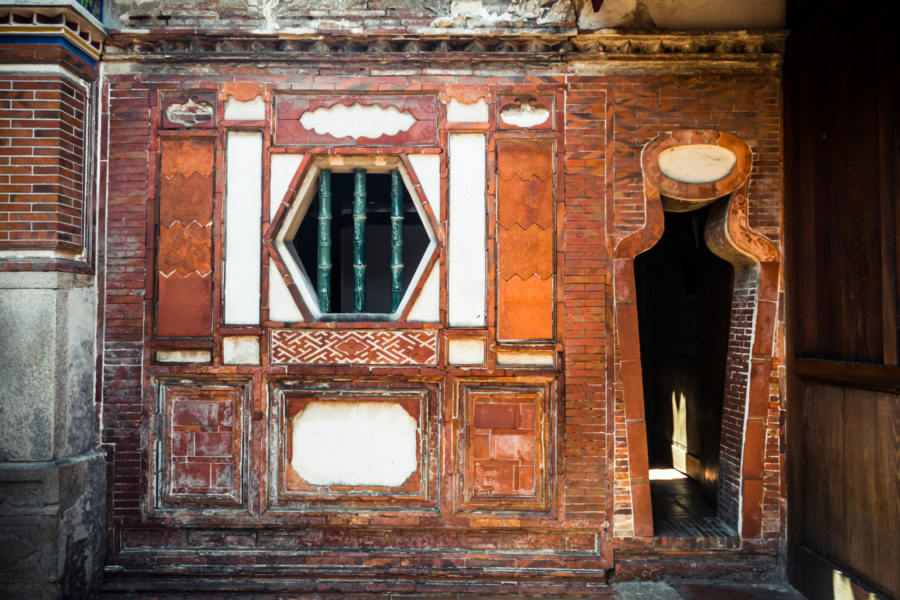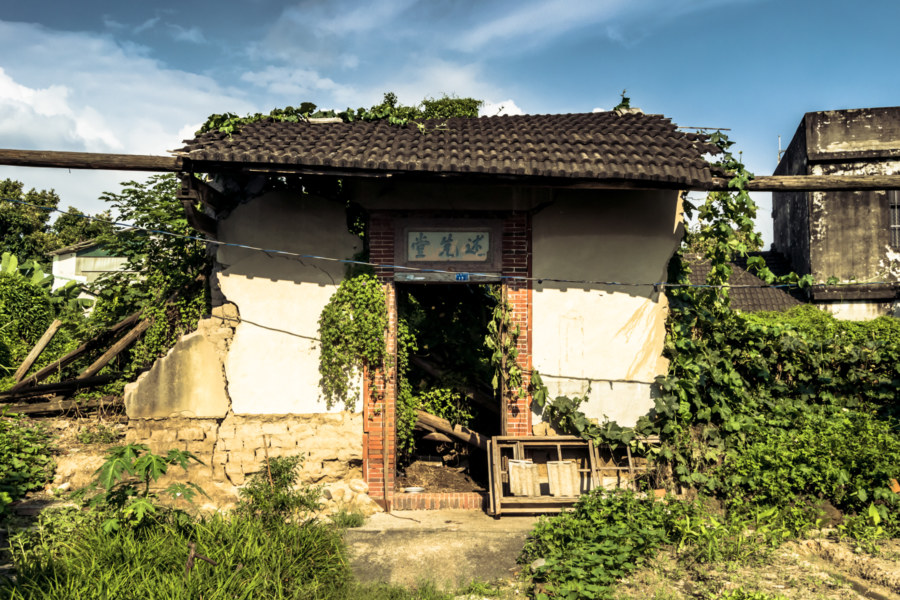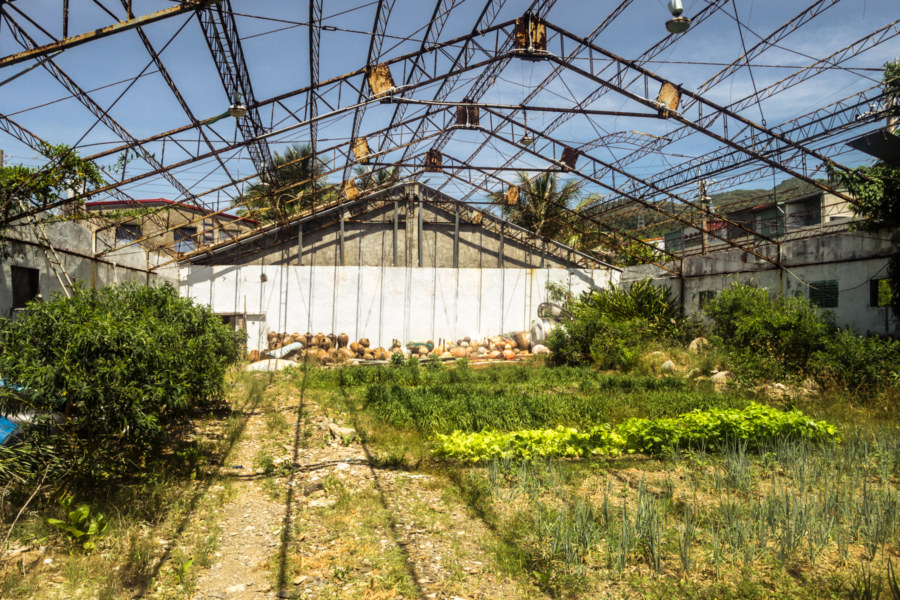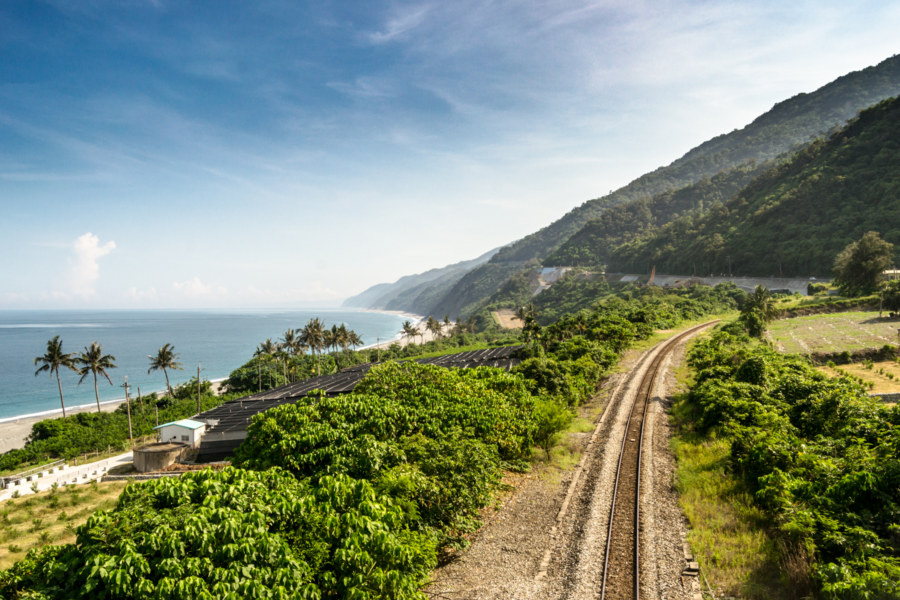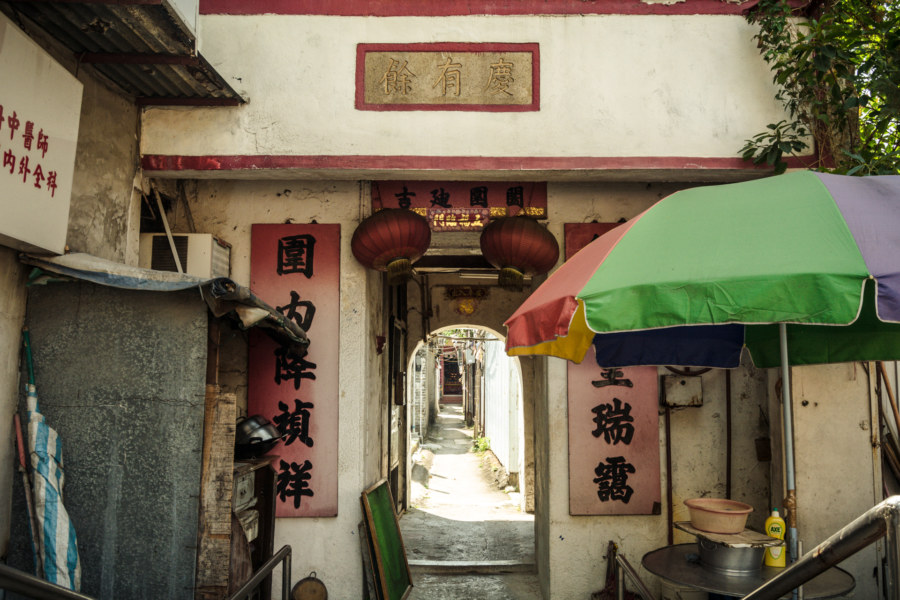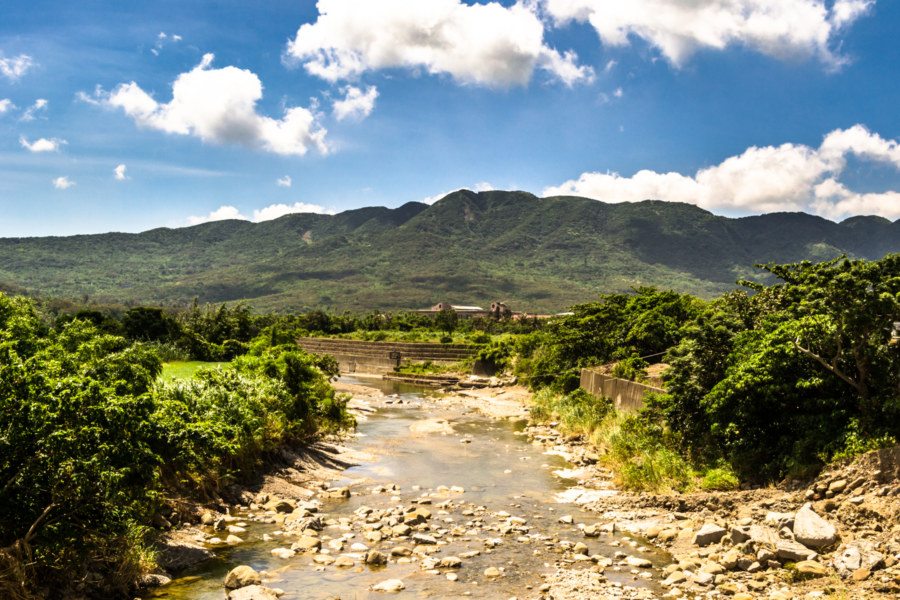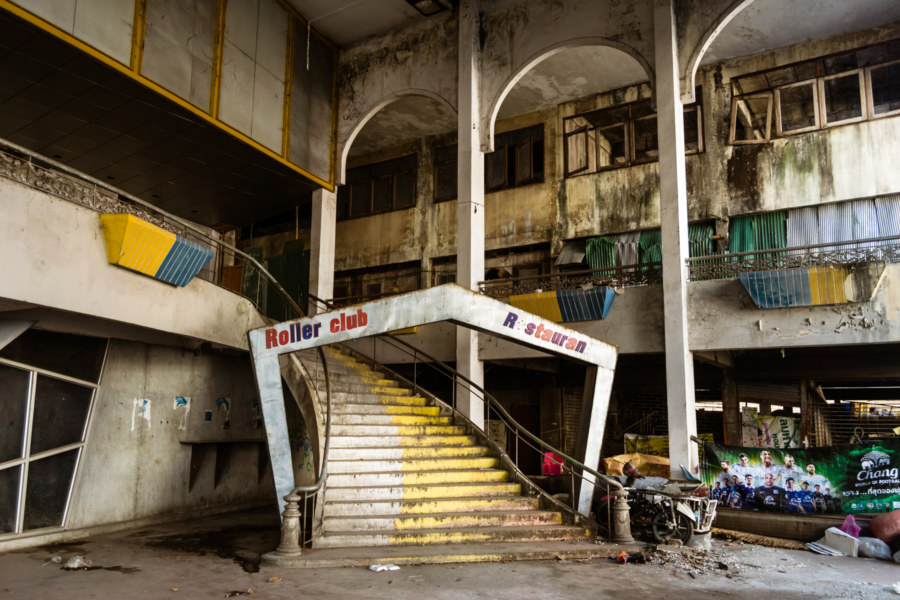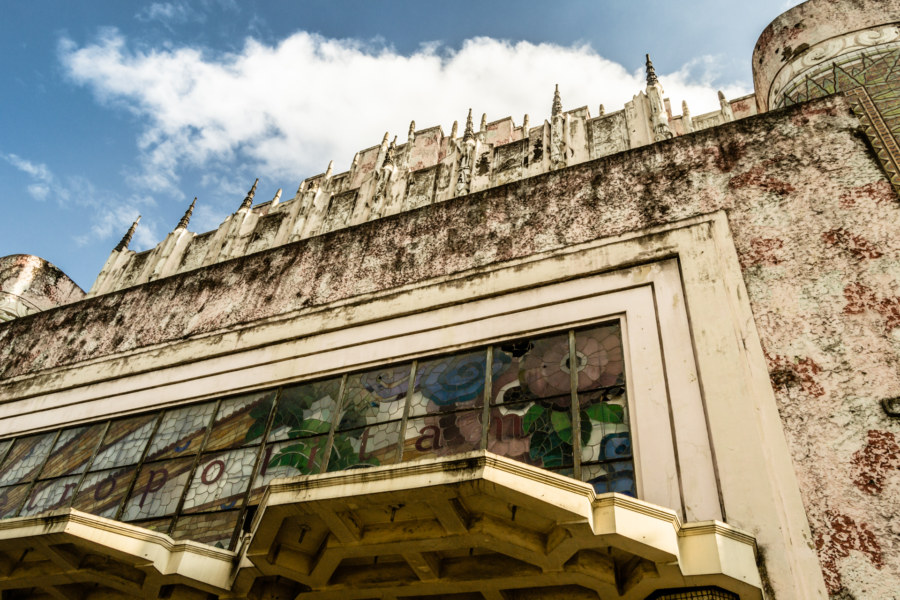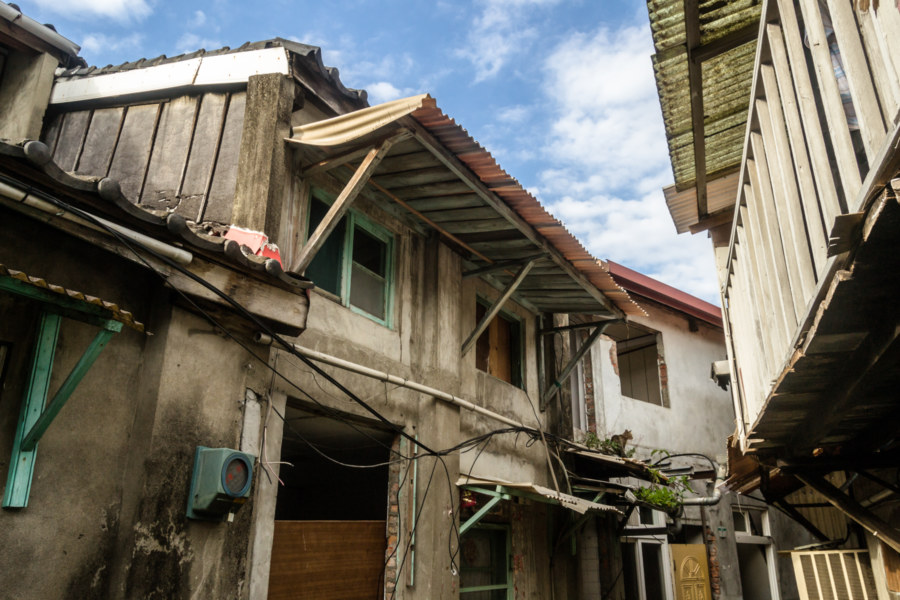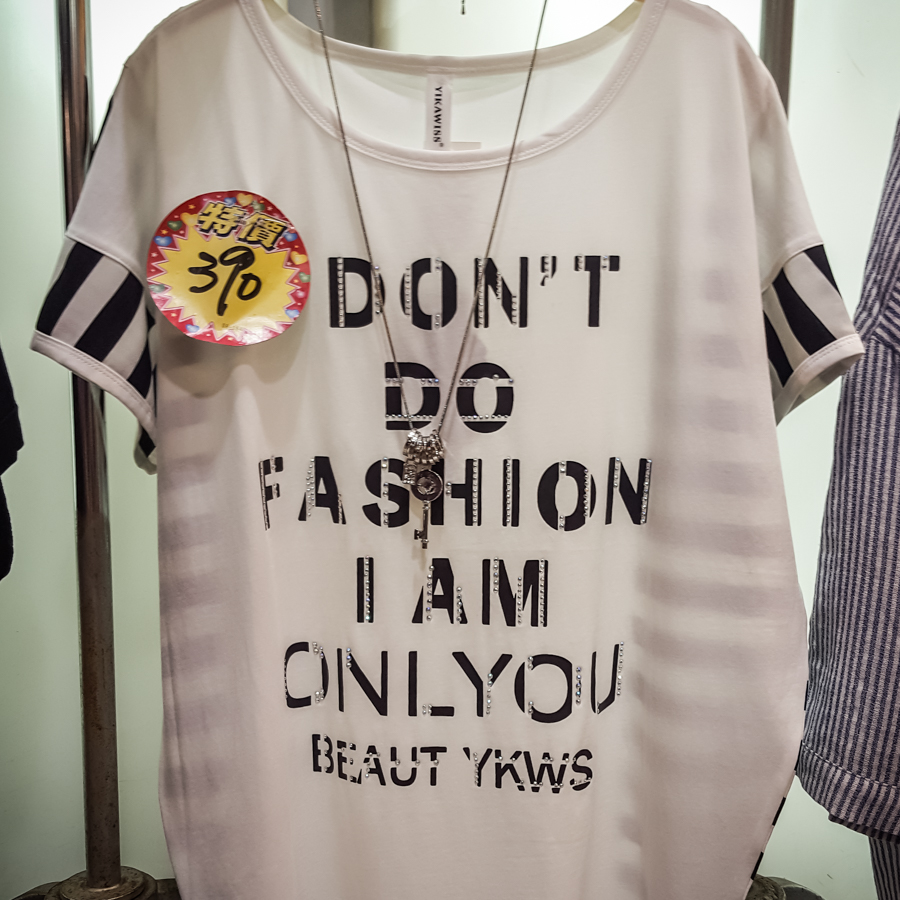Built in 1887, Huángxī Academy 磺溪書院 is one of dozens of Qing dynasty era schools of classical studies in Taiwan. Located in Dadu, a small town in southwestern Taichung, it provides a window into a time when scholarship was more closely interwoven with spirituality. Apart from classrooms and areas for quiet study the academy also has an altar to the Five Wénchāng 五文昌: Kuí Xīng 魁星, Zhū Xī 朱熹, Guān Yǔ 關羽, Lǚ Dòngbīn 呂洞賓, and, of course, Wénchāng 文昌 himself. Collectively these Taoist gods represent classical Chinese culture and several are commonly venerated by students prior to writing exams. Structurally the academy follows a plan similar to a traditional Taiwanese courtyard home or sanheyuan with the addition of a large gatehouse and pavilion.
Shuidui Settlement 水碓聚落
Taichung is undergoing a massive transformation as vast tracts of rural-industrial sprawl are cleared to make way for new developments around the high-speed rail station 高鐵台中站 and the future Taichung Metro system, particularly in Beitun, Nantun, and Wuri. Google’s satellite maps are out of sync with the streets, many of which are so new that they appear only as ghostly lines coursing through the former rice paddies. With large parts of the urban periphery slated for wholesale demolition and renewal many grassroots organizations have formed to preserve cultural assets found in these doomed territories—as was the case with the Shuinan Tobacco Barn 水湳菸樓. Today I chanced upon another example: Shuǐduì Jùluò 水碓聚落, a rare 17th century Hakka settlement in Nantun with an ambiguous future.
Dawu Theater 大武戲院
I stumbled upon the remains of Dawu Theater 大武戲院 while on a bicycle tour of southern Taiwan in 2015. Located in the small town of Dawu, it was one of approximately 36 theaters operating in Taitung in the cinematic heyday of the 1960s and 70s, all of which are now abandoned or destroyed. This particular theater was in business from 1968 to 1983 and allegedly accommodated as many as 1,200 patrons, earning it the title of nánbàtiān 南霸天, or “southern tyrant”, for how it dominated the industry in the southernmost part of the county. Hardly anything remains after three decades of exposure that would identify Dawu Theater apart from a small sign in the antechamber.
Southern Taiwan Ride 2015: Dawu to Taitung City
My last big day of riding around southern Taiwan in June 2015 began in Dawu, Taitung, with only about 55 kilometers to go before arriving in Taitung City. I had been out in the sun far too much the previous day and was feeling rather sluggish and a bit sick so I didn’t end up taking any side trips into the mountains as I made my way north. Even so, the scenery was fantastic, and while I won’t have as much to write about this particular day of my trip, I have plenty of beautiful photographs to share.
Nga Tsin Wai: The Last Walled Village of Kowloon
Nga Tsin Wai Village 衙前圍村 is widely known as the last walled village of Kowloon. Located not far from the former location of the infamous Kowloon Walled City 九龍城寨, the village traces its history back to the 1352 founding of its modest Tin Hau Temple 天后宮. It was fortified in 1724 to defend against bandits and pirates but has, in modern times, lost the moat, walls, and watchtowers that once protected residents from harm. As the very last of its kind in the urban heart of Hong Kong it has become a flashpoint for conflict between the Urban Renewal Authority and the many activist groups and citizens passionate about preserving what remains of Kowloon’s cultural heritage.
Southern Taiwan Ride 2015: Manzhou to Dawu
My fifth day of riding around southern Taiwan in June 2015 delivered me to the most remote parts of the island’s 1,139 kilometer-long coastline. On the previous day I rode from Fangliao, on the southwestern coast, around Hengchun and into the foothills of the Central Mountain Range 中央山脈 to reach Manzhou, one of the last places to find lodging before forging on to Taitung. I had already taken this route while riding all around Taiwan in 2013 so I was familiar with the territory, but that first tour was so rushed that I hadn’t been able to enjoy the scenery. (Actually, I had been outrunning a typhoon the last time I was here—but that’s a story not yet told on this blog.) This time around my intent was to take it slow and explore more of this obscure part of coastal Taiwan.
Space Roller, Chiang Mai
Space Roller is an abandoned rollerskating rink not far from the Arcade Bus Station on the northeastern outskirts of Chiang Mai, Thailand. I dropped in to check it out in January 2016 after reading about it online, possibly here, and was impressed with the scale of the place. It is big, taking up the better part of a city block, with several unfinished add-ons extending into the urban wilderness on either side. Unfortunately there isn’t a lot of credible information about Space Roller in English so this post will consist primarily of photos of what I found in about half an hour of slinking through the shadows.
Manila Metropolitan Theater
Manila Metropolitan Theater, or simply the Met, is the largest and most famous Art Deco theater in Manila. Designed by the prolific Juan M. Arellano, the Met officially opened in 1931 and soon became a focal point for Manila’s high society. Like most of the rest of the city Manila Metropolitan Theater was heavily damaged in the Battle of Manila. The post-war era wasn’t kind to the Met; it fell into disrepute for decades until restoration efforts were undertaken in the late 1970s. Ownership disputes led to another phase of neglect in the mid-1990s and today it remains abandoned despite occasional efforts at rehabilitation.
Fushui Village 富水里
Fùshuǐ Village (富水里) is located on a small parcel of land at the southern edge of Zhongzheng, Taipei, just to the west of Gōnggǔan Station (公館站). Technically the village contains the now-abandoned Jiahe New Village (嘉禾新村), a military dependents’ village previously profiled on this blog, but most common uses of the name refer to the illegal settlement running along Yǒngchūn Street (永春街), just inside the riverside wall. This settlement of around a hundred homes, like nearby Treasure Hill (寶藏巖), was supposed to be destroyed around the turn of the millennium, but plans have gone awry, and its fate remains unclear.
Taiwan Night Market Fashion 1
In addition to their reputation for novelty foods night markets in Taiwan also offer an almost endless variety of cheap goods, particularly clothing and accessories. Much of Taiwanese night market fashion is amusing, quirky, provocative, bizarre, or even incoherent, though some of it is also quite clever. My understanding is that a lot of the weirder stuff originates in China, where massive factories churn out garments emblazoned with English text and pop culture references without regard for semantic meaning. This is almost certainly the result of copying passages from print or online media, using machine translation, or sheer laziness, but it might also be for aesthetic effect. Transcription errors are common, particularly when popular designs are copied by competing factories. Observed on the scale of years there is something almost evolutionary at work in night market fashion—styles mutate and are subject to a kind of natural selection. To celebrate the absurdity of this curious cultural phenomena I have assembled about 40 photos from my many visits to the night markets of Taiwan, almost all of which I have previously been shared on my Instagram account, the perfect vehicle for such inanity. Enjoy!
